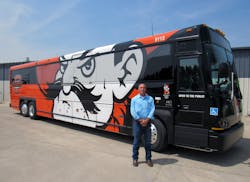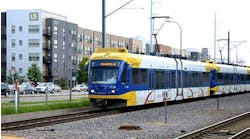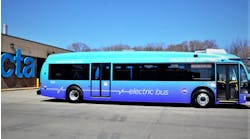Looking to make the grade with better air quality and lower fuel costs, America’s Brightest Orange – Oklahoma State University (OSU) – has switched its bus fleet to compressed natural gas. Its three new CNG MCI D4500 coaches, equipped with wheelchair lifts and Wi-Fi, will serve the University’s Big Orange Bus (BOB) transit system, which shuttles students, faculty, staff and the public between the university's Stillwater and Tulsa campuses.
“It’s a big milestone: We're the first in the state to have a bus fleet that is completely CNG,” said Tom Duncan, Oklahoma State University transit service manager, crediting BOB service with increases in employment, educational opportunities and attendance at OSU’s Tulsa campus. “The majority of ridership is tied to the university, but residents and travelers to the area find the service convenient because we connect with Greyhound and Tulsa International Airport. And the free Wi-Fi allows riders to take care of business while they commute, rather than spending hours driving.”
Beyond valuing the environmental benefits, OSU likes the lower costs associated with CNG and the riding comfort of the MCI D4500 coach.
“While the cost of CNG varies, the target we’re working off of is $1.50 a gallon, which should save us about $100,000 a year,” said Duncan. “Our drivers like the steerable tag axle and rear-raise on the coach. We haven’t been shy about driving the coaches around while training our drivers, and the graphics attract a lot of attention.”
Indeed, it’s hard to miss a bright orange bus that’s emblazoned with an image of Pistol Pete, OSU’s mascot. But even less flashy MCI D4500s have attracted attention around the country, thanks to the model’s highway-dedicated design, low total cost of operation and top reliability, with fewer failures per vehicle than all other types of buses. Passenger like the model’s forward-facing seating, reading lights, airflow controls, 110-volt outlets, Wi-Fi connectivity and three-point passenger seatbelts.
The Big Orange Bus travels a 71-mile route between Stillwater and Tulsa Monday through Friday. The system is self-sustaining through bus fares and state and federal funds.
OSU has a Ride System smartphone app that displays bus routes and real-time locations, along with estimated arrival times at each stop. The university uses Twitter to announce delays and route changes, texting information related to passengers’ specific stops.
All together, OSU operates 24 CNG vehicles on a system that includes fixed route, shuttle and paratransit service. As the school year gets underway, Duncan said he expects to transport 6,000 passengers a day system wide. “We’re usually filled to capacity.” To learn more, visit www.osu-tulsa.okstate.edu/bob.




